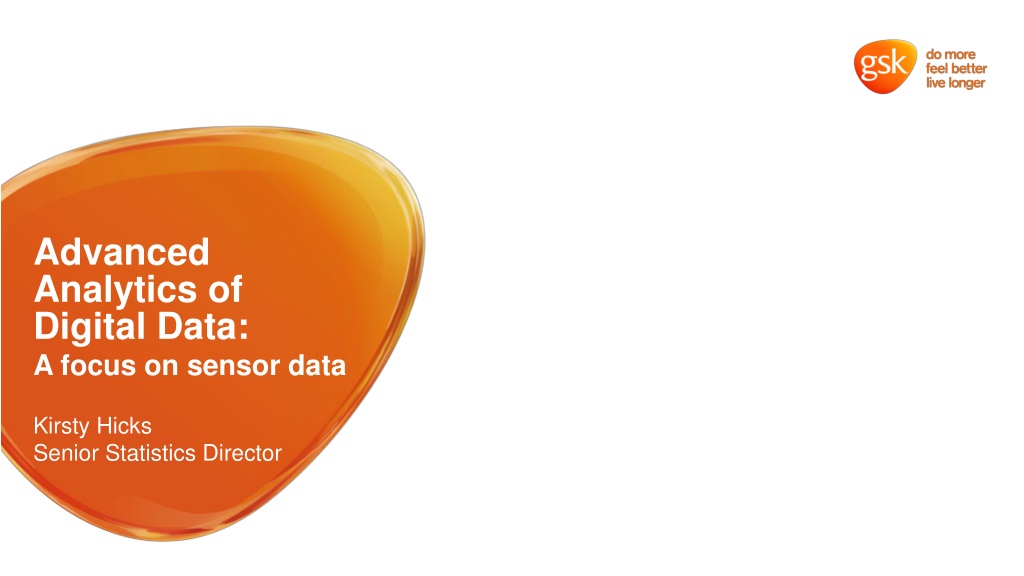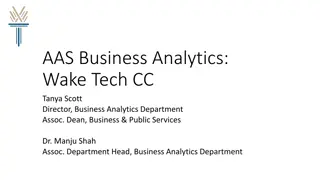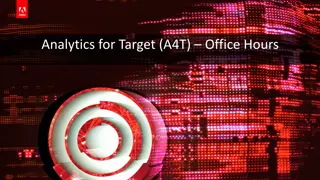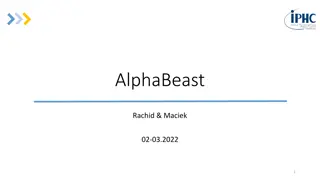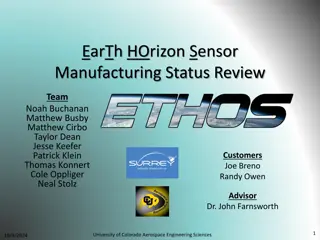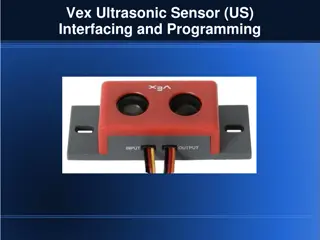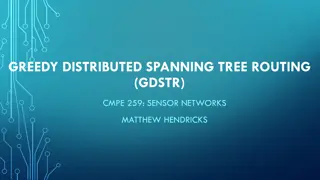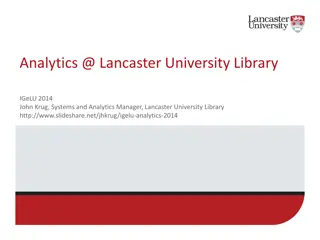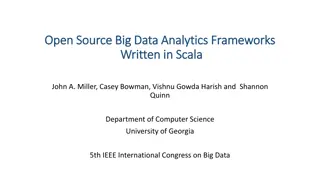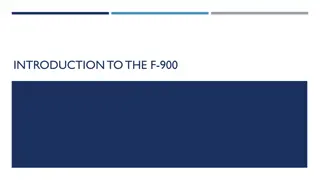Understanding Digital Data and Sensor Analytics in Healthcare
Digital data plays a vital role in healthcare, enabling the collection of real-time information through wearable sensors and mobile devices. Sensor data, such as actigraphy, provides valuable insights into patient activity levels and disease impacts. Utilizing advanced analytics, including machine learning algorithms, helps extract meaningful summaries from raw accelerometer data in clinical trials, enhancing our understanding of patient populations and their mobility limitations.
Download Presentation

Please find below an Image/Link to download the presentation.
The content on the website is provided AS IS for your information and personal use only. It may not be sold, licensed, or shared on other websites without obtaining consent from the author. Download presentation by click this link. If you encounter any issues during the download, it is possible that the publisher has removed the file from their server.
E N D
Presentation Transcript
Advanced Analytics of Digital Data: A focus on sensor data Kirsty Hicks Senior Statistics Director
What is Digital Data? App s Big data Post marketing surveillance Wearable sensors Virtual patient visits Electronic medical records eConsent Ethnographics Visualisation Data warehouse eSample tracking Real world evidence Social media Compliance trackers ePROs Cloud Tablets / mobile devices 2
What is Digital Data? Most of us will be: wearing a watch monitoring some aspect of our movement use phone apps that collect health information Digital data can be used to collect information on: sleep patterns respiration rate step count continuous monitoring of heart rate and energy expenditure patient adherence Collecting data through digital devices increases patient engagement and can provide real time data Regulations for use of digital technologies in clinical trials are still evolving 3
Sensor data: Actigraphy Many diseases limit patients ability to perform physical activity Actigraphy is a non-invasive method of monitoring human activity A small actigraph unit (actimetry sensor) is worn for a week or more to measure gross motor activity Movements the actigraph unit undergoes are continually recorded Utilisation in clinical studies provides a great opportunity to better understand patient populations and how diseases limit their mobility Produce vast amounts of data continuously e.g. second-by-second or minute-by-minute over one week several times during study Accelerometers can measure 300 data points per second: => In one week this can be 181.44 M data points 4
Actigraphy: Clinical trials Raw accelerometer data is processed utilising machine learning algorithms to obtain more meaningful summaries of activity Activity counts, Rate of energy expenditure (METs) Raw data Appropriate for the patient population (movement expectations vary) Vertical Axis Lateral Axis Acceleration Forward Axis Data summaries can be produced at different time aggregations Second-by-second, minute-by-minute, hourly, Daily, etc . Time Transition between or proportion of time: Type of activity: Lying, sitting, standing, walking Activity intensity: Sedentary, moderate, vigorous
Sensor data: Challenges How do we choose a sensor type for the trial? Clinical hypothesis Patient population studied Wear location and duration Does it need to be waterproof? Design issues Number of countries Which country (import of devices, local country regulations) Ability to charge the device Data storage: volume of data that is required to be stored Downloadability of the data: can it be downloaded or backed up onto a phone Format and content of actigraphy summary dataset may vary by vendor 6
Sensor data: Challenges What data processing is required? Data access to cloud in real time? Filter data corresponding to clinical visits where actigraphy data collection was planned according to protocol Apply data quality rules pre-specified in the protocol eg 8 hours for 3 days within the 7 day data collection period prior to the visit How can we analyse this type of data in a clinical trial to assess if the treatment works? Identify clinically meaningful endpoints Summary measures Consideration of continuous and categorical data on a minute by minute scale Apply appropriate statistical analysis techniques (eg Generalised Additive Models) Consideration: all sources of activity data could be correlated Need to consider computer capabilities 7
Actigraphy: Clinical trials Summarise physical activity through indices of: total activity time active or sedentary Producing indices that condense minute-by-minute time-series into one single value => loss of information Analyse the whole minute-by-minute time series directly 8
Sensor data: Challenges How can we analyse this data type in a clinical trial to learn about the patient population, disease progression, etc? Identification of activity patterns? Differences between populations? How compare treatment groups Extensive data collected and what appropriate visualisation techniques should be applied? Identify appropriate visualisation techniques for representing the data Activity changes during the day, ie there are diurnal patterns; Or weekday v s weekend? Age can affect what happens in the second half of the day How does the activity in the previous hour affect the activity in the next hour? Should this be considered in the statistical analysis? Relationship between novel digital endpoints and clinically standard ones? eg how are FEV1 and actigraphy related in COPD patients? 9
Sensor data: Challenges How to deal with missing data? Compliance issues: consideration of how could be reduced, and how dealt with in analysis Sometimes long gaps (up to a few hours) with missing data in many subjects How deal with instances where have 0 steps, but non-zero distance Longitudinal setting? Device worn at several periods during treatment phase How compare multiple time series within a patient? How do we produce a meaningful change from baseline? How do we ensure that the data is collected appropriately? Location of sensor does it make a difference? How long should the sensor be worn, what volume of data is sufficient? eg how many days? What wear time within a day? Appropriate data format to fit into reporting systems 10
Regulatory Perspective FDA FDA agreed with Bellerophon Therapeutics on the use of a digital Biomarker as the primary endpoint in their forthcoming pivotal Phase 3 study, measured by a wearable activity monitor (actigraphy). European Medicine Agency (EMA) Gave a positive opinion to qualify a digital endpoint (fully measured with sensors) as an adequate secondary endpoint in therapeutic clinical trials in Duchenne Muscular Dystrophy A critical breakthrough as the first fully digital endpoint to be qualified by either EU/US regulators. EMA now offers advice on Qualification of novel methodologies for medicine development including DBs to ensure endpoint acceptance. Clinical Trials Transformation Initiative In collaboration with FDA and large pharma developed and published guidelines to develop novel endpoints based on digital technologies, aiming to standardise methodologies to ensure consistency. 11
Sensor data: Collaboration Advanced Analytics of Digital Data group within GSK SPIN Article PSI Data Science SIG 13
Summary Actigraphy data contain rich information with huge potential: real-time data, objective, new endpoints, better characterization of patient populations In process of understanding this type of information and learning how to deal with it Number of issues with physical activity data from wearables including missing data, development of endpoints (relevant for patients and clinicians), statistical approaches to assess the impact of a treatment, data visualisation More literature exists on developing actigraphy summaries from accelerometers raw data than on analysis of minute-by-minute data. Further research is needed, especially in context of clinical trials. 14
Acknowledgements Juanjo Abellan Nicky Best Luis Garcia-Gancedo Val Hamy Matthew Heasley Edoardo Lisi Ashwin Venkat Sarah Watts 15
